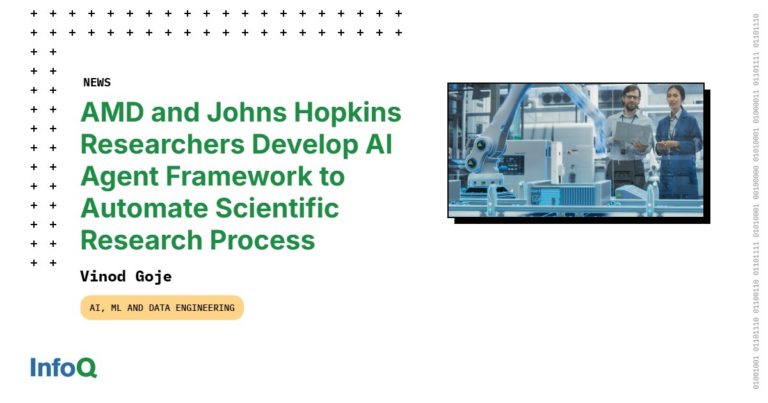AI Tools by AMD and Johns Hopkins Make Scientific Research Easier and Faster
Imagine a world where the complexities of scientific research are simplified, where tedious research tasks are handled by advanced systems, allowing brilliant minds to focus on innovation and creativity. Well, that world is becoming a reality, thanks to the innovative AI research tools created by AMD and Johns Hopkins University. This story isn’t just about technology; it’s about how smart systems like Agent Laboratory are revolutionizing how research is done, making it faster and easier.
AI in Scientific Research
Let’s step into the shoes of a scientist for a moment. You’re inundated with an overwhelming number of scientific papers and data. How can you possibly keep up? Enter the Agent Laboratory, a smart system developed by the technological powerhouse AMD and the prestigious Johns Hopkins University. This system acts like a diligent research assistant, tirelessly reading scientific papers and writing reports, so you don’t have to. It’s as if you have a library of knowledge at your fingertips!
But hold on, is it safe to rely on this AI alone? Not entirely. Human expertise is still vital to ensure accuracy and quality. Think of Agent Laboratory as a helpful intern who’s great at gathering information but still needs your guidance to bring it all together.
Software Development Trends
In parallel with AI advancements, the world of software development is experiencing its own transformation. Creating immersive experiences like virtual reality is becoming as accessible as ever. Leveraging popular tools such as React and JavaScript, developers are now able to craft these experiences with greater ease and efficiency. The technology might have had a steep learning curve in the past, but today’s tools make it accessible to many.
Moreover, there’s a concerted effort to breathe new life into outdated computer systems. Imagine dusting off an old gadget and giving it a new purpose – that’s precisely what’s happening in software development today. With these updates, businesses get systems that are not only reliable but also more beneficial for their specific needs.
AI Infrastructure and Efficiency
To handle data faster and more effectively, tools such as Ray are stepping up. These technologies allow AI to process large amounts of data swiftly, which in turn speeds up research and testing. Think of Ray as turbo boosting your car, allowing you to achieve more in less time.
Furthermore, language models advancing to new levels, like those resembling GPT-4, are changing the research landscape. They’re cutting down the time spent on tedious tasks, which means researchers can dedicate more time to what excites them the most: discovering new frontiers and building on them.
Team Dynamics in Tech
Now, let’s take a peek into the tech work environment. For tech companies to truly thrive, teams need to gel well together, particularly in areas like DevOps, where managing software efficiently is crucial. Just like in any great sports team, understanding each member’s strengths and thought processes can lead to designing better products and solutions. It’s about knowing when to pass the ball and when to shoot the goal.
Cost Efficiency in AI
One compelling aspect of Agent Laboratory is just how much money it can save while maintaining, or even elevating, the quality of research outputs. Imagine achieving better results without breaking the bank – that’s what these AI tools promise.
Different AI models offer varying levels of cost-effectiveness, depending upon their application. Some excel in speed, while others shine in accuracy. Picking the right tool for the job can convert significant savings into research achievements.
Innovative Use of AI
AI is not just a tool; it’s a gateway to new possibilities. Picture using AI to creatively juggle complex projects such as cancer research. By automating traditional methods, AI doesn’t just make things faster; it opens doors to new methods and approaches.
However, don’t underestimate the value of human creativity and guidance in steering these technological marvels. It’s like having a super-computer in a lab coat: capable and fast, but still relying on the brilliance of human thought to achieve real-world solutions.
In summary, the collaboration between AMD and Johns Hopkins University showcases how AI research tools are reshaping the scientific landscape. They’re paving the way for more efficient, cost-effective, and innovative research methodologies. While the technology promises unprecedented speeds and efficiencies, the human touch remains indispensable for transforming raw data into breakthrough discoveries.










